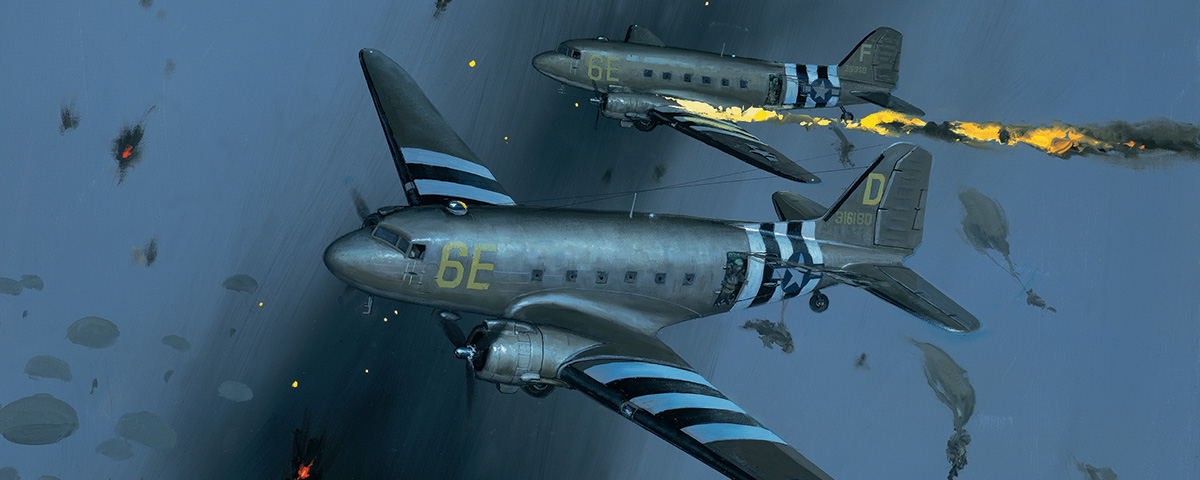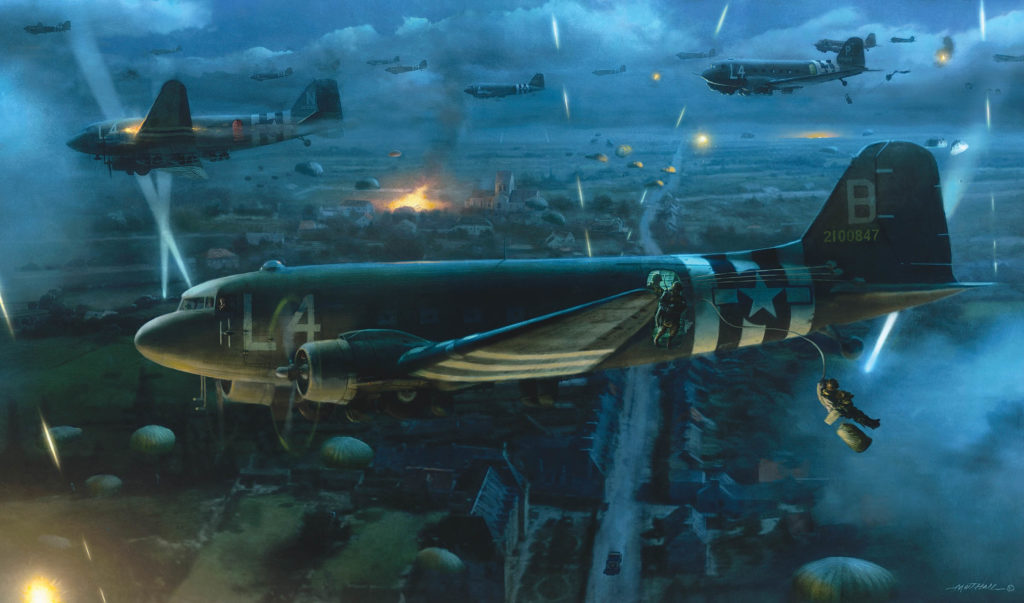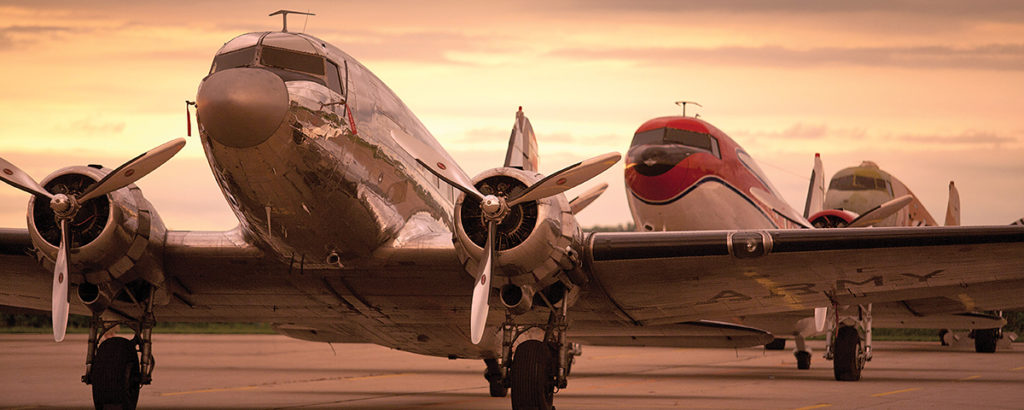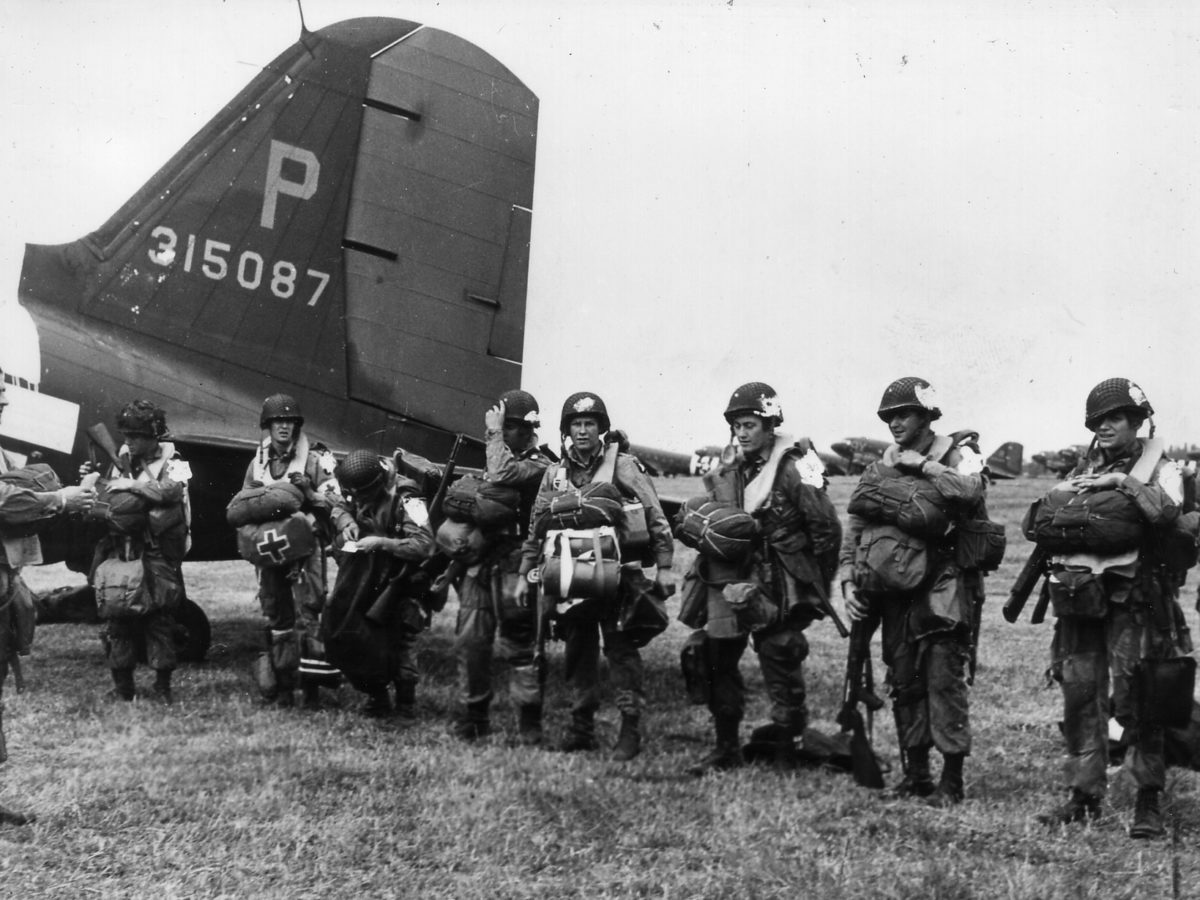On June 6, 1944, my father, Lieutenant Russell Chandler Jr., flew a Douglas C-47 into Normandy, dropping troops of the 82nd Airborne Division at Ste. Mère-Eglise. He subsequently operated out of temporary airfields in Europe, supplying frontline forces. He also participated in Operation Market-Garden, during which he was shot down after a resupply mission to the 101st Airborne Division. Like other logistical elements, transport pilots did not receive the acclaim of their higher profile contemporaries, such as fighter pilots. Yet transport units frequently suffered very high casualty rates.
Imagine being in a formation of unarmed aircraft hundreds of miles long, dropping below 1,000 feet at 90 mph, with every German in the area shooting at you, and you can understand why he said, ‘As sitting ducks, our only defense was darkness and the hand of God.’ Russ Chandler’s story illustrates the composure under fire that these unsung heroes frequently demonstrated.
Aviation History: When did you enlist in the U.S. Army Air Corps?
Chandler: I enlisted in 1940 at the age of 21. I did my basic training at Maxwell Air Base, Montgomery, Ala. I guess because I had ROTC training at a military high school, I ended up being the cadet commander for the entire base.
AH: Where were you first assigned?
Chandler: I was trained as a photographer, and my first assignment was to the 44th Bomb Squadron (Heavy). We were located at France Field in the Canal Zone near Colon, Panama. Our primary duty prior to the war was to run flyovers in Douglas B-18B ‘Bolos’ [bombers modified for antisubmarine warfare] up and down Central America, photographing the terrain for the purpose of mapping the best route for the Pan American Highway.
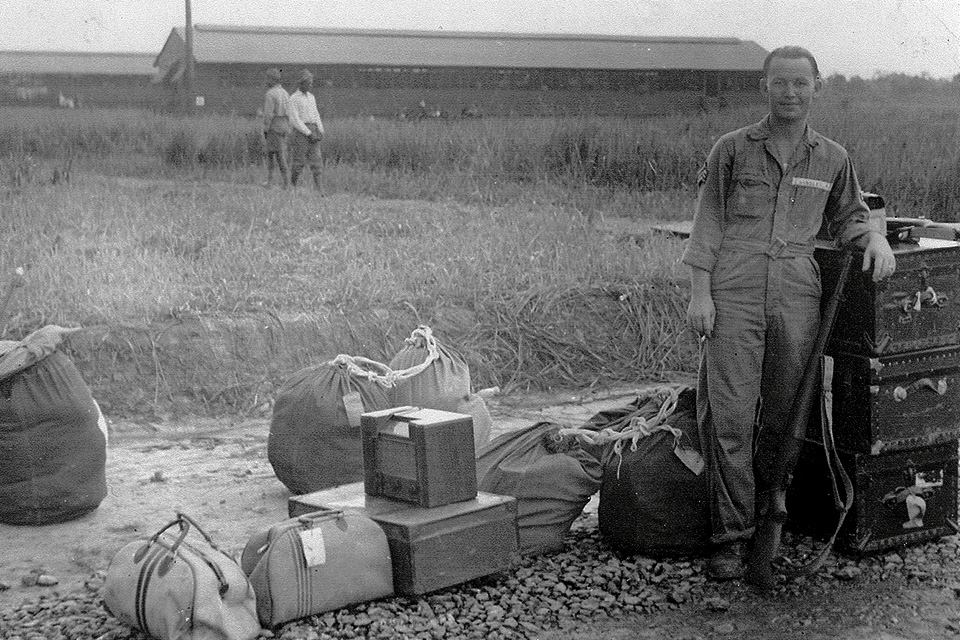
AH: So you actually enlisted before the United States entered the war?
Chandler: Correct. Four of us, including my stepbrother [Roland Jehl, who became a 30-year career officer and rose to the rank of full colonel], could see the war coming, and our bravado got the best of us, so we signed on. We hoped that early entry might give us an opportunity to attend flight school later. Besides, they promised us that we could serve together. Of course, that was an exaggeration.
AH: We don’t hear of much action in Central America. Did you experience any combat in your time there?
Chandler: Besides serving as a photographer, I was also a machine-gunner. After the war broke out, we were restationed to Atkinson Field, near Georgetown, British Guiana [now independent Guyana]. We were pretty much isolated and flew mostly routine patrols to protect oil tankers coming out of Venezuela. Another B-18 in our group sank a German U-boat, U-654, on August 2, 1942, but another U-boat returned the favor by sinking our supply ship as it entered Georgetown Harbor. That was before Christmas, and it supposedly carried a supply of frozen turkeys. Instead, we enjoyed baked monkey that Christmas. I guess my first action occurred when we encountered, bombed and sank a German ship.
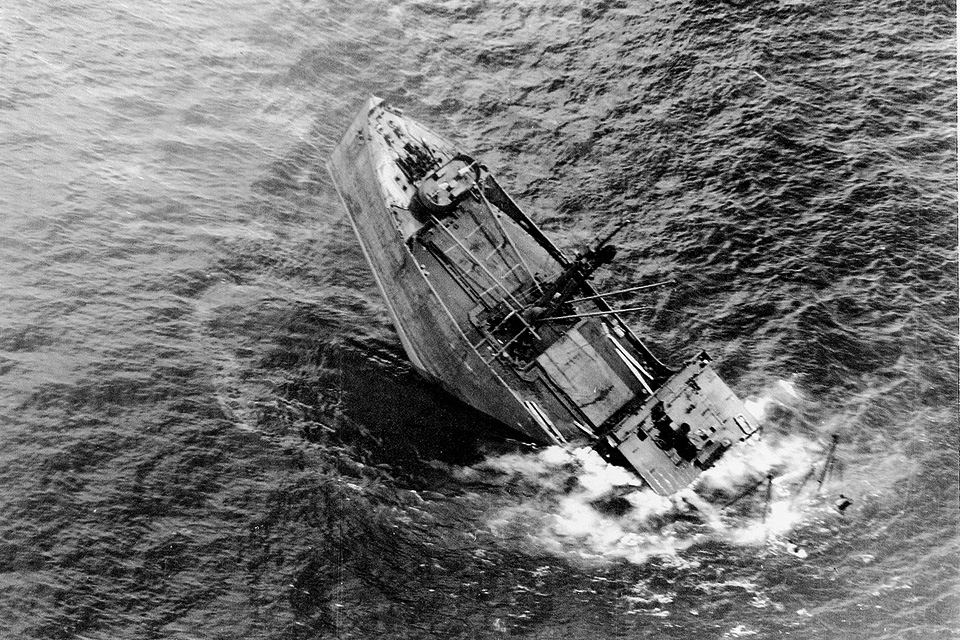
AH: What about flight school?
Chandler: Flying was my childhood dream, and when the opportunity arose, I took the qualification exams and was accepted in early 1943. I did my primary training in Albany, Ga., basic at Bainbridge, Ga., and advanced training at Moody Field in Valdosta. I was commissioned in October 1943 and sent to Sardis, Miss., and Austin, Texas, for my multiengine rating and C-47 specialization training.
AH: You trained on the Atlantic Front. How did you ferry your aircraft over there to England?
Chandler: There were two primary ferry routes: the shorter northern route up through Nova Scotia, Iceland, Greenland and then England, or the longer southern route.
GET HISTORY’S GREATEST TALES—RIGHT IN YOUR INBOX
Subscribe to our HistoryNet Now! newsletter for the best of the past, delivered every Monday and Thursday.
AH: You took the southern route, right? Explain how that worked.
Chandler: My co-pilot and I were sent to Muncie, Ind., to take delivery of our ‘Gooney Bird,’ or ‘Dakota,’ as the Brits called the C-47s–I liked that better than the Skytrain designation that the United States used. We flew south, stopping at Moody Field, where we had to overnight because of a ‘mechanical’ issue; then we continued on to Miami.
AH: You had a bit of a grin on your face when you mentioned Moody Field.
Chandler: Yes, that was very close to the hometown of my bride of six months, and she just happened to be at Moody when we had that problem. From Miami, we flew to Puerto Rico, to Trinidad, then to my old base in former British Guiana, and on to Recife, Brazil. Then we took the long hop to Ascension Island in the middle of the Atlantic, on to Freetown, Sierra Leone; next to Marrakech, Morocco; before heading north to England.
AH: I understand the Germans tried to disrupt that route, right?
Chandler: Ascension is a small, nine-square-mile island in the Atlantic under British administration. During the war it became very important as a refueling station for those aircraft making this southern journey. The United States built a landing strip there called Wide Awake Field; 25,000 planes landed during the war. We navigated via radio beacon set up on the island, and if you were to misnavigate you would eventually run out of fuel and ditch into the Atlantic. Apparently, a German duplicated the signal, only more powerfully, and drew some of our planes off course, never to be seen again. I think we had discovered that trick before my trip, but I did have one scare. I had been pleasantly surprised when our crew chief brought me a fresh coffee several hours into the flight. That surprise became terror when I stepped to the rear of the aircraft to discover him brewing another pot over an open-flame Coleman burner. Obviously, he had forgotten that those two rubber containers filling the cargo compartment were the highly flammable aviation fuel needed for the extended range! We had no more coffee, but it makes you wonder about some planes that just vanished, doesn’t it?
AH: Sure does. Did you carry any other cargo during the ferry trip?
Chandler: Only the four cases of Kentucky bourbon I purchased in Puerto Rico to resell when I got to England.
AH: At a reasonable markup, right?
Chandler: Sure, fifths that sold for $1.50 in Puerto Rico were worth $25 in England. A little bootlegging has always been an acceptable part of military transportation. One just had to be discreet about it.
Recommended for you
AH: So you ferried that C-47 more than 12,000 miles.
Chandler: That sounds about right–and at an average cruising speed of about 165 mph calculates to over 70 hours of flying time, not including refueling stops. It took us several weeks with the layovers.
AH: That’s over halfway around the world. Tell us about the last leg from Marrakech to England.
Chandler: We were scheduled to leave almost immediately, but a bad weather pattern had developed off the coast of Spain, so we had to lay over a few days in Marrakech. This began creating a logistics issue, as planes were starting to stack up on the field. But we finally pushed on after a few days. I have learned in life that things are relative. For example, I was standing in line to get final clearance from the flight coordinator when the B-17 pilot in front of me explained he must delay his trip because one of his .50-caliber gun turrets was jammed. Nonplussed, the colonel in command pointed to me and said, ‘See that .45 on that man’s belt?’ The lieutenant responded, ‘Yes, sir.’ Whereupon, the colonel shouted, ‘Well, that’s the entire firepower his aircraft has. Get your damned butt out of here!’
AH: That must have been an embarrassing moment for the other guy. Did you have any problems getting to England?
Chandler: Just as we had flown in from the States, we flew that leg in single, scattered sorties. We were entirely on our own, with no fighter support. Bouncing along between some cloud layers at about 8,000 feet above the Bay of Biscay, I spotted a twin-engine fighter, I think an Me-110, several miles to my starboard. I suppose he would station himself there to pick off unarmed guys like me, but fortunately those clouds offered a very good sanctuary, so I pulled up into them. That is, until I began to ice up. I then eased her below the clouds, and to my chagrin again spotted our pursuer, so I jumped back up into the cloud cover. This hide-and-seek game continued forever–more like 20 minutes. I suppose he began to run low on fuel, as he finally dropped the pursuit without firing a single shot.
AH: So you didn’t get to use your .45?
Chandler: That’s right. We continued on and refueled somewhere near Land’s End before pushing on to our final destination.
AH: Which was where?
Chandler: We were assigned to the Ninth Air Force, 44th Squadron, 316th Troop Carrier Group, stationed in Cottesmore, Nottingham.
AH: What did you do the next three months leading up to D-Day?
Chandler: Mostly training, with emphasis on forming up and flying in the large formations that we would utilize on D-Day. We did fly a few night missions over France, dropping intelligence personnel and supplies to the Resistance forces. I guess I flew three or four of those missions.
AH: Do you remember any major incidents from those months?
Chandler: When that many personnel and aircraft are involved, there will always be accidents. However, the one that was most disturbing to me occurred when our group was flying formation and the lead aircraft suddenly climbed up out of formation, for what reason we will never know, and collided with another formation crossing overhead. That aircraft was carrying the group commander, the chaplain and other high-ranking officers. We flew directly through the flames and debris, which gave us a small glimpse of what the big day would be like.
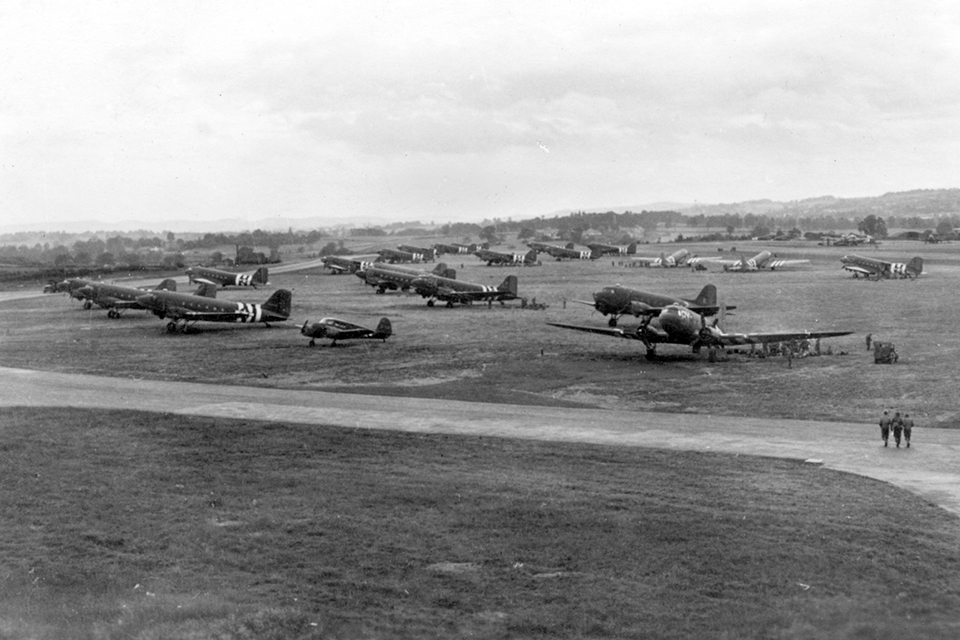
AH: What did you think of the C-47?
Chandler: I found the C-47 a very sturdy and reliable aircraft. I am sure hundreds are still flying somewhere in the world today. They would absorb a tremendous amount of flak, and I have seen some still flying with half their rudders blown off. They certainly fulfilled the mission they were designed for.
AH: Tell us about D-Day.
Chandler: For us, it started the night before. To make our drop scheduled for 1 a.m., we were wheels up about 10:30 p.m., and it took about 1 1/2 hours to form up and about an hour to the drop zone to avoid radar. We crossed the Channel at about 500 feet and climbed to 1,500 feet as we hit the Channel Islands to avoid the AA. I dropped 27 paratroopers of the 82nd Airborne into the area just south of Ste. Mère-Eglise. We returned the next morning to drop supplies and equipment, and that evening we towed in gliders.
AH: Explain what those formations looked like.
Chandler: I can still picture it. For the 82nd Airborne, there were over 430 aircraft in a very tight formation, wingtip to wingtip, for miles on end. Overall, there were 2,000 C-47s used on D-Day. I think the recent HBO movie Band of Brothers portrayed it fairly accurately.
AH: Including aircraft being blasted out of the sky?
Chandler: Unfortunately, yes. Flak was often heavy, and it was sickening to watch your wingman take a hit, nose over and head down. There was no skill in avoiding being hit. You stayed in formation and prayed it wouldn’t be you. Of my group of 27, I think we lost seven that first day. Those of us who survived knew it was the hand of God that had delivered us home.
AH: Tell us more about what it was like on that morning of D-Day?
Chandler: It was a huge risk to drop such a large number of men at night, but one calculated to surprise and disrupt enemy troops that might try to reinforce those at the beachhead. We had complete radio silence, and the only navigational aides we had were blue lights on the top of the wingtips and fuselage. The lead aircraft of each group of 45 would home in on a radio beacon being broadcast by pathfinders, who had parachuted in at midnight. We had to follow the leader to the drop zone.
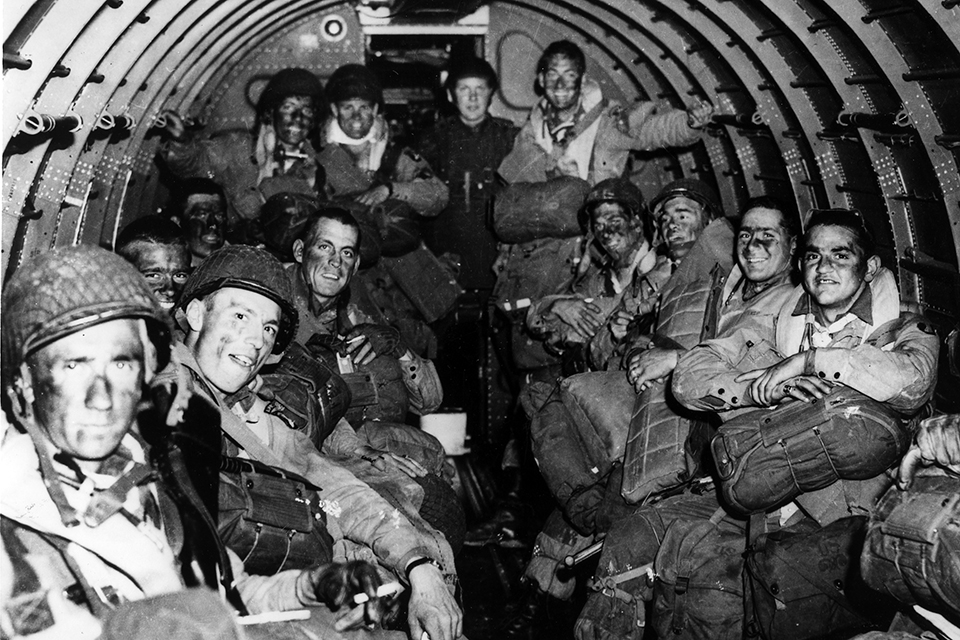
AH: What were the weather conditions?
Chandler: I don’t recall any moon. It was very dark, and there was cloud cover when we hit the coast of France, which caused some of the squadrons to lose visual contact with their leader and disperse. I understand paratroopers were scattered throughout the Cotentin. Our group was able to remain in formation and on course. I think we found the right drop zone, but there was no way to know at that time.
AH: Tell us about the flak.
Chandler: I guess our ‘great surprise’ didn’t last for long. It would be hard not to notice 2,000 aircraft at 1,500 feet. Once we crossed the coast, the Germans started throwing everything they could at us. I doubt if there were any Dakotas that weren’t hit somewhere. It was a frightening fireworks display, but the noise of some ordnance penetrating your aircraft was a bit unnerving.
AH: Any anecdotes from the first drop?
Chandler: I remember one paratrooper, a sergeant, who had taken some shrapnel in the leg. By rights, he should have stayed on board and flown back with us. Instead, he told my crew chief, ‘I’m jumping, it’s too dangerous in this thing!’ And he did. I guess we all have our own perspective of where the danger lies, and I suppose he did get medical attention as soon as he hit the ground, instead of waiting two hours to go back to England with us.
AH: At what altitude did they jump?
Chandler: Six hundred feet. Once the shroud line was pulled, those guys were on the ground in seconds, with as little time as possible as a target. However, at that altitude and at 90 mph, we were a pretty large target and in range of every type of small arms. I was glad it was still dark, but at that moment we all felt like sitting ducks.
AH: What was your greatest fear?
Chandler: Actually, friendly fire. After exiting the drop zone, we broke formation, and it was basically a race home, with every man for himself. The safest location was down low, so we were screaming back across the Channel just above the deck, and suddenly this large shape appears through my windscreen and starts firing its entire portside armament toward us. I never identified the cruiser that we encountered. The encounter was reminiscent of a previous incident in which our Navy had shot down nearly 50 of our own C-47s returning from a drop zone in Sicily on July 10, 1943. Although I wasn’t involved in the previous encounter, others in my unit were, and they always reminded us of the fact that 30 percent of the aircraft used in the airdrop were shot down in such a manner. This only heightened our anxiety.
AH: Did you continue to make airdrops?
Chandler: No. The gliders we towed in carried large mesh mats, which were rolled out onto cleared fields. Those Dakotas could land on a fairly short field, and within days we were landing on these temporary runways, delivering supplies and returning with casualties to England.
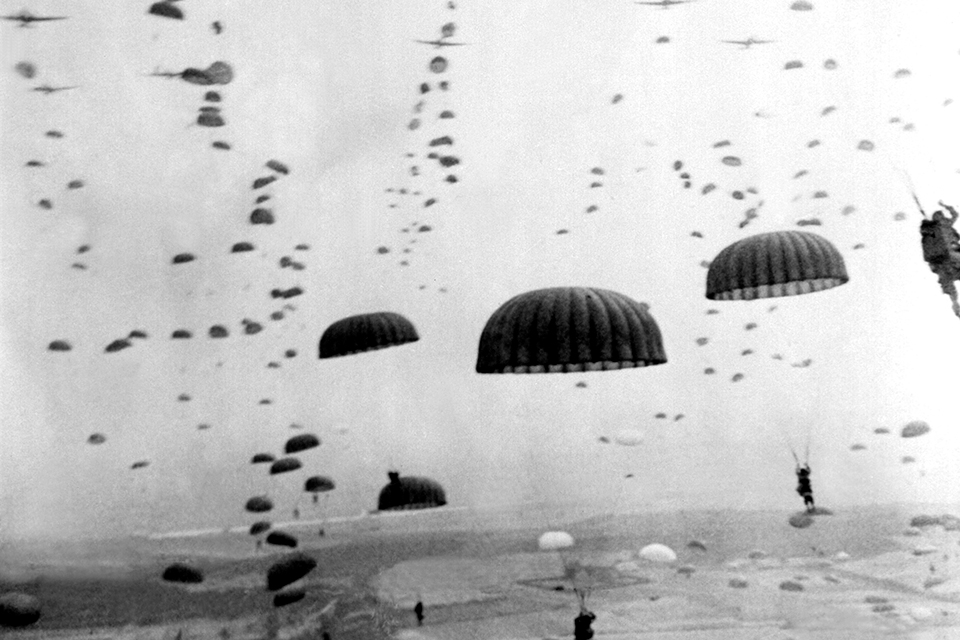
AH: Any other troop drops?
Chandler: Yes, we continued to supply partisans behind enemy lines, and our squadron dropped the 101st Airborne during Operation Market-Garden.
AH: The ‘bridge too far,’ right?
Chandler: Correct–it was for me as well. I was resupplying our troops at Eindhoven on the second day [September 18, 1944] when I was brought down by groundfire on the return flight.
AH: What happened?
Chandler: We had made our drop in the afternoon and were busting along somewhere over Belgium at maybe 800 feet. As we crossed a tree line, a battery of German 88s opened up on us. Unlike on D-Day, we were dropping in daylight. This gave us more accurate drops and allowed the ground units to be closer together, but made us much more vulnerable targets. One shell slammed through the cabin, knocking out half the rudder, and another took out the starboard engine. Well, you don’t fly too far with one engine at that altitude, and I may have made another two or three miles before I pancaked into a field, spun around and slammed into a hedgerow and caught fire. We stopped less than 100 yards from a German hospital.
AH: So you were behind enemy lines?
Chandler: Fortunately, the front was ill-defined, as the fighting had moved on. Apparently the Germans in that hospital had been abandoned. I guess they were the lucky ones; the war was over for them. They even came out and carried me into the hospital.
AH: Did everyone on your aircraft survive?
Chandler: Yes, fortunately. But the impact jammed my left foot between the rudder pedals and the firewall. My crew chief had the foresight to go back to the rudder and manually move it until I was freed. I think the plane blew about 10 minutes later.
AH: Is that why you received the Air Medal?
Chandler: Correct. But I would have preferred a nonstop flight from Eindhoven back to England. When I brought that plane in, I didn’t have time to think of anything other than finding a long enough field and delivering on what I had been trained to do. Every pilot in my unit deserved the same citation. I understand that there were roughly 400 Army Air Forces casualties in that operation.
AH: Was your injury the end of your combat days?
Chandler: Yes, my ankle was pretty messed up. I was airlifted back to England and put on a hospital ship and sent home.
AH: You had a pretty close call.
Chandler: Yeah, but by the grace of God, I am here today. Many of my friends aren’t, and it is still difficult for me to reminisce.
AH: Besides being a part of the last world war, is there anything that this Army Air Forces experience did for you personally?
Chandler: Besides the brotherhood thing that all us World War II vets share, there are two personal benefits that I can attest to. First, I was able to utilize my pilot skills in my business, and always owned a small aircraft of some sort from the 1950s through the ’80s. As a salesman, I could cover twice the territory of my competition. However, and most important, traveling between training sites I met a beautiful young woman in south Georgia. She couldn’t resist my aerial courtship (although the flyovers were clearly against regs), and she soon became my wife. We’ve been married for 60 years.
This article was written by A. Russell Chandler III and originally published in the July 2004 issue of Aviation History. For additional reading, try: The Longest Day and A Bridge Too Far, both by Cornelius Ryan; or D-Day: June 6, 1944, by Stephen E. Ambrose.
For more great articles subscribe to Aviation History magazine today!
Ready to build your own D-Day C-47? Click here!

